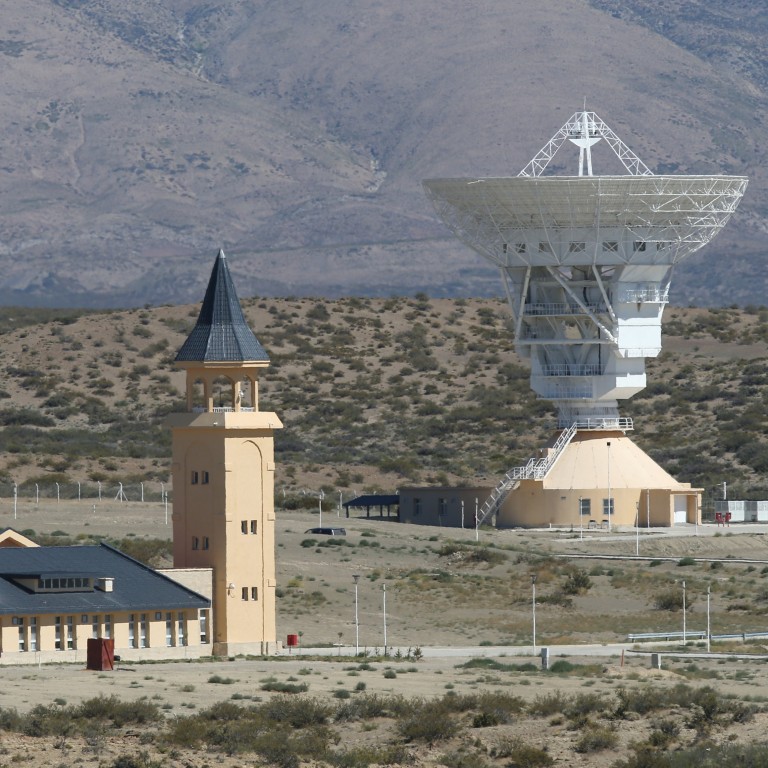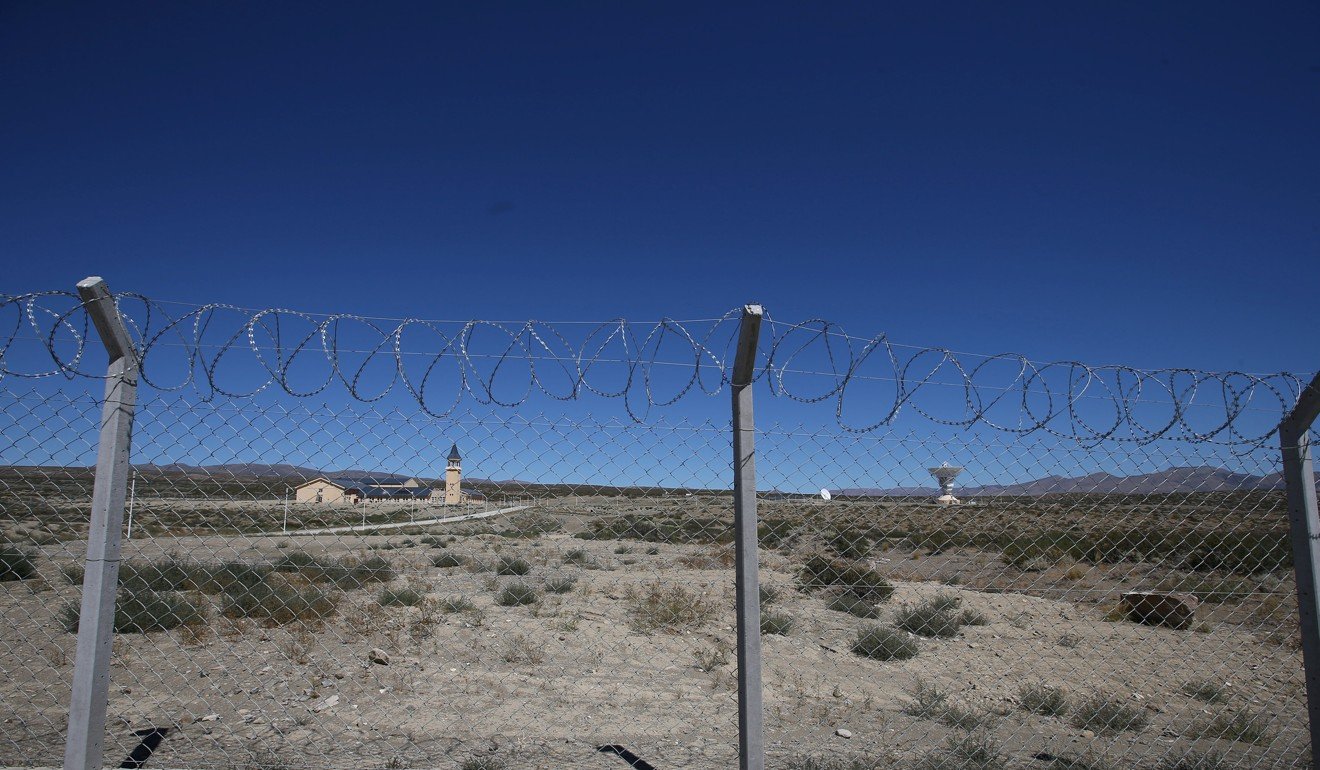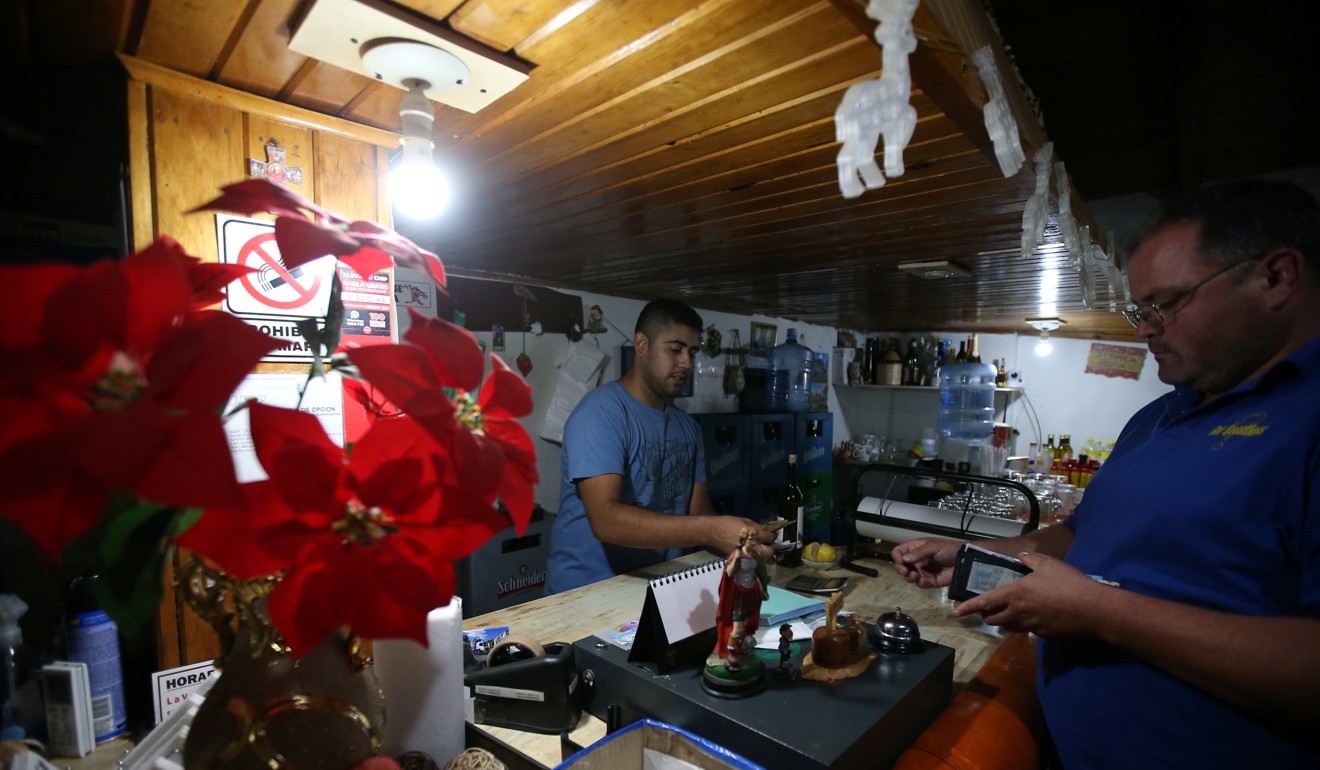
Military-run Chinese space station in Argentina raises fears of secret operations
- Lack of openness and oversight at Patagonian base fuel suspicions about its true purposes although Beijing insists it is solely used for scientific research
- China promised Argentina it would not be used for military purposes, but hosts cannot monitor the facility
When China built a military-run space station in Argentinian Patagonia it promised to include a visitors’ centre to explain the purpose of its powerful 16-storey antenna.
The centre is now built – behind the 2.5 metre (8ft) barbed wire fence that surrounds the entire space station compound. Visits are by appointment only.
Shrouded in secrecy, the compound has stirred unease among residents, fuelled conspiracy theories and sparked concerns in the Trump administration about its true purpose, according to interviews with dozens of residents, current and former Argentine government officials, US officials, satellite and astronomy specialists and legal experts.
The station’s stated aim is peaceful space observation and exploration and, according to Chinese media, it played a key role in China’s landing of a spacecraft on the far side of the moon in January.
But the remote 200-hectare (500-acre) compound operates with little oversight by the Argentine authorities, according to hundreds of pages of Argentine government documents obtained by Reuters and reviewed by international law experts.

President Mauricio Macri’s former foreign minister, Susana Malcorra, said in an interview that Argentina had no physical oversight of the station’s operations. In 2016, she revised the China space station deal to include a stipulation it be for civilian use only.
The agreement obliged China to tell Argentina about its activities at the station but provided no enforcement mechanism for authorities to ensure it was not being used for military purposes, the international law experts said.
“It really doesn’t matter what it says in the contract or in the agreement,” said Juan Uriburu, an Argentine lawyer who worked on two major Argentina-China joint ventures. “How do you make sure they play by the rules?
“I would say that, given that one of the actors involved in the agreements reports directly to the Chinese military, it is at least intriguing to see that the Argentine government did not deal with this issue with greater specificity.”
Nasa says it will work with Chinese space agency on lunar landing research
China’s space programme is run by its military, the People’s Liberation Army. The Patagonian station is managed by the China Satellite Launch and Tracking Control General (CLTC), which reports to the PLA’s Strategic Support Force.
Beijing insists its space programme is for peaceful purposes and its foreign ministry stressed in a statement that the Argentine station was for civilian use only. It said the station was open to the public and media.
“The suspicions of some individuals have ulterior motives,” the ministry said.
Asked how it ensures the station is not used for military purposes, Argentina’s space agency CONAE said the agreement between the two countries stated their commitment to “peaceful use” of the project.
It said radio emissions from the station were also monitored, but radio astronomy experts said the Chinese could easily hide illicit data in these transmissions or add encrypted channels to the frequencies agreed upon with Argentina.
CONAE also said it had no staff permanently based at the station, but they made “periodic” trips there.
The United States has long been worried about what it sees as China’s strategy to “militarise” space, according to one US official, who added there was reason to be sceptical of Beijing’s insistence that the Argentine base was strictly for exploration.
Other US officials who spoke to Reuters expressed similar concerns.
“The Patagonia ground station, agreed to in secret by a corrupt and financially vulnerable government a decade ago, is another example of opaque and predatory Chinese dealings that undermine the sovereignty of host nations,” said Garrett Marquis, spokesman for the White House National Security Council.
Some radio astronomy experts said US concerns were overblown and the station was probably as advertised – a scientific venture with Argentina – even if its 35-metre diameter dish could eavesdrop on foreign satellites.
Tony Beasley, director of the US National Radio Astronomy Observatory, said the station could, in theory, “listen” to other governments’ satellites, potentially picking up sensitive data. But that kind of listening could be done with far less sophisticated equipment.
“Anyone can do that. I can do that with a dish in my backyard, basically,” Beasley said. “I don’t know that there’s anything particularly sinister or troubling about any part of China’s space radio network in Argentina.”
China’s first lunar leaf dies after scientists are forced to cut power
Argentine officials have defended the Chinese station, saying the agreement with China is similar to one signed with the European Space Agency, which built a station in a neighbouring province. Both have 50-year, tax-free leases. Argentine scientists in theory have access to 10 per cent of the antenna time at both stations.
The law experts who reviewed the documents said there was one notable difference: ESA is a civilian agency.
“All of the ESA governments play by democratic rules,” Uriburu said. “The party is not the state. But that’s not the case in China. The party is the state.”
In the United States, Nasa, like the ESA, is a civilian agency, while the US military has it own space command for military or national security missions. In some instances, Nasa and the military had collaborated, said Jonathan McDowell, an astronomer at the Harvard-Smithsonian Centre for Astrophysics.
“The line does blur sometimes,” he said. “But that’s very much the exception.”

In Las Lajas, a town of 7,000 people located about 40 minutes drive from the station, the antenna is a source of bewilderment and suspicion.
“These people don’t allow you access, they don’t let you see,” said shop owner Alfredo Garrido, 51. “My opinion is that it is not a scientific research base, but rather a Chinese military base.”
Among the wilder conspiracy theories reporters heard during a visit to the town: that the base was being used to build a nuclear bomb.
The drive from Las Lajas to the space station is barren and dusty. There are no signs indicating the station’s existence. The sprawling antenna is suddenly visible after a curve in the gravel road off the main thoroughfare. The massive dish is the only sign of human life for miles around.
Onwards to Mars for China after moon mission success
The station became operational in April. Thirty Chinese employees work and live on site, which employs no locals, according to the Las Lajas mayor, Maria Espinosa, adding that the station has been good for the local economy.
Espinosa said she rented her house to Chinese space station workers before they moved to the base and had visited the site herself at least eight times.
Others in Las Lajas said they rarely saw anyone from the station in town, except when the staff made a trip to its Chinese supermarket.
Reuters requested access to the station through CONAE, the local provincial government and China’s embassy. CONAE said it was not able to approve a visit by Reuters in the short term but it was planning a media day.
It added that students from nearby towns had already visited the compound.

When Argentina’s Congress debated the space station in 2015, during the presidency of Cristina Fernandez, opposition lawmakers questioned why there was no stipulation that it only be for civilian use. Nonetheless, Congress approved the deal.
When Macri took office in 2015 he was worried the space station agreement did not explicitly say it should be for civilian use only, said Malcorra, his then foreign minister, who flew to Beijing in 2016 to rework it.
Malcorra said she was constrained in her ability to revise it because it had already been signed by Fernandez. The Chinese, however, agreed to include the stipulation that it be for civilian use.
She insisted on a press conference with her Chinese counterpart in Beijing to publicise this.
“This was something I requested to make sure there was no doubt or no hidden agenda from any side here, and that our people knew that we had done this,” she said from her home in Spain.
But it still fell short on one key point – oversight.
“There was no way we could do that after the level of recognition that this agreement had from our side. This was recognised, accepted and approved by Congress,” Malcorra said.
“I would have written the agreement in a different way,” she added. “I would have clauses that articulate the access to oversight.”
Malcorra said she was confident that Argentina could approach China for “reassurances” if there was ever any doubt about activities at the station.
When asked how Argentina would know about those activities, she said, “There will be some people who will tell us, don’t worry.”
New York’s police are using Chinese facial recognition tech on citizens
The opaqueness of the station’s operations and the reluctance of Argentine officials to talk about it makes it hard to determine who exactly has visited the compound.
A provincial government official provided Reuters a list of local journalists who had toured the facility. A number appeared to have visited on a single day in February 2017, 14 months before it became operational, a review of their stories and social media postings showed.
Aside from Espinosa, the mayor of Las Lajas, no one else interviewed by Reuters in town had toured the station. Resident Matias Uran, 24, however, said his sister was among a group of students who visited last year. They saw a dining room and a games room, he said.
Alberto Hugo Amarilla, 60, who runs a small hotel in Las Lajas, recalled a dinner he attended soon after construction began at the site.
There, he said, a Chinese official in town to visit the site greeted him enthusiastically. His fellow dinner guests told him the official had learned that Amarilla was a retired army officer.
The official, they said, was a Chinese general.

